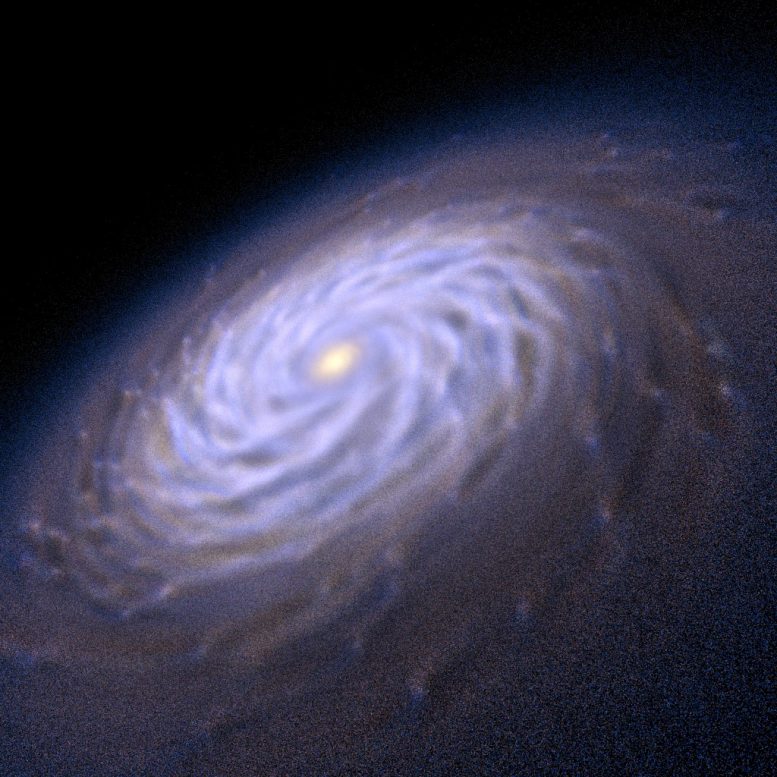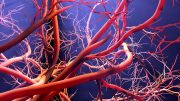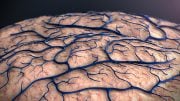
Powerful new computer simulations are allowing astronomers to understand how spiral arms in galaxies form and survive. These simulations suggest that the arms arise as a result of the influence of giant molecular clouds – star forming regions or nurseries common in galaxies. Introduced into the simulation, the clouds act as “perturbers” and are enough to not only initiate the formation of spiral arms but to sustain them indefinitely. In this frame from one such simulation, more than 100 million “stellar particles” form the familiar shape of a spiral galaxy. Credit: Thiago Ize & Chris Johnson (Scientific Computing and Imaging Institute)
Using new computer simulations to follow the motions of as many as 100 million “stellar particles” as gravity and other astrophysical forces sculpt them into familiar galactic shapes, researchers reveal new insights on how spiral galaxies get their arms.
Spiral galaxies are some of the most beautiful and photogenic residents of the universe. Our own Milky Way is a spiral. Our solar system and Earth reside somewhere near one of its filamentous arms. And nearly 70 percent of the galaxies closest to the Milky Way are spirals.
But despite their common shape, how galaxies like ours get and maintain their characteristic arms has proved to be an enduring puzzle in astrophysics. How do the arms of spiral galaxies arise? Do they change or come and go over time?
The answers to these and other questions are now coming into focus as researchers capitalize on powerful new computer simulations to follow the motions of as many as 100 million “stellar particles” as gravity and other astrophysical forces sculpt them into familiar galactic shapes. A team of researchers from the University of Wisconsin-Madison and the Harvard-Smithsonian Center for Astrophysics reports simulations that seem to resolve long-standing questions about the origin and life history of spiral arms in disk galaxies.
The full animation on how spiral galaxies get their arms.
“We show for the first time that stellar spiral arms are not transient features, as claimed for several decades,” says UW-Madison astrophysicist Elena D’Onghia, who led the new research along with Harvard colleagues Mark Vogelsberger and Lars Hernquist.
“The spiral arms are self-perpetuating, persistent, and surprisingly long lived,” adds Vogelsberger.
The origin and fate of the emblematic spiral arms in disk galaxies have been debated by astrophysicists for decades, with two theories predominating. One holds that the arms come and go over time. A second and widely held theory is that the material that makes up the arms – stars, gas, and dust – is affected by differences in gravity and jams up, like cars at rush hour, sustaining the arms for long periods.
The new results fall somewhere in between the two theories and suggest that the arms arise in the first place as a result of the influence of giant molecular clouds – star forming regions or nurseries common in galaxies. Introduced into the simulation, the clouds act as “perturbers” and are enough to not only initiate the formation of spiral arms but to sustain them indefinitely.
“We find they are forming spiral arms,” explains D’Onghia. “Past theory held the arms would go away with the perturbations removed, but we see that (once formed) the arms self-perpetuate, even when the perturbations are removed. It proves that once the arms are generated through these clouds, they can exist on their own through (the influence of) gravity, even in the extreme when the perturbations are no longer there.”
The new study modeled stand-alone disk galaxies, those not influenced by another nearby galaxy or object. Some recent studies have explored the likelihood that spiral galaxies with a close neighbor (a nearby dwarf galaxy, for example) get their arms as gravity from the satellite galaxy pulls on the disk of its neighbor.
According to Vogelsberger and Hernquist, the new simulations can be used to reinterpret observational data, looking at both the high-density molecular clouds as well as gravitationally induced “holes” in space as the mechanisms that drive the formation of the characteristic arms of spiral galaxies.
The team’s research was published in the March 20 issue of The Astrophysical Journal and is available online.
Reference: “Self-Perpetuating Spiral Arms in Disk Galaxies” by Elena D’Onghia, Mark Vogelsberger and Lars Hernquist, 5 March 2013, The Astrophysical Journal.
DOI: 10.1088/0004-637X/766/1/34









I just do not see how computer simulations help anyone really. Garbage in Garbage out, computers don’t acquire knowledge or think for themselves they are programmed or told what to do as well as what the final output should be. Just like surveying 1600 people and trying to equate that into the opinion of 350 million people. Not very accurate but I guess if you want to believe it, then it must be true. Math does not lie, but, garbage in results in garbage out..
Then you don’t see the usefulness of weather forecasts presumably.